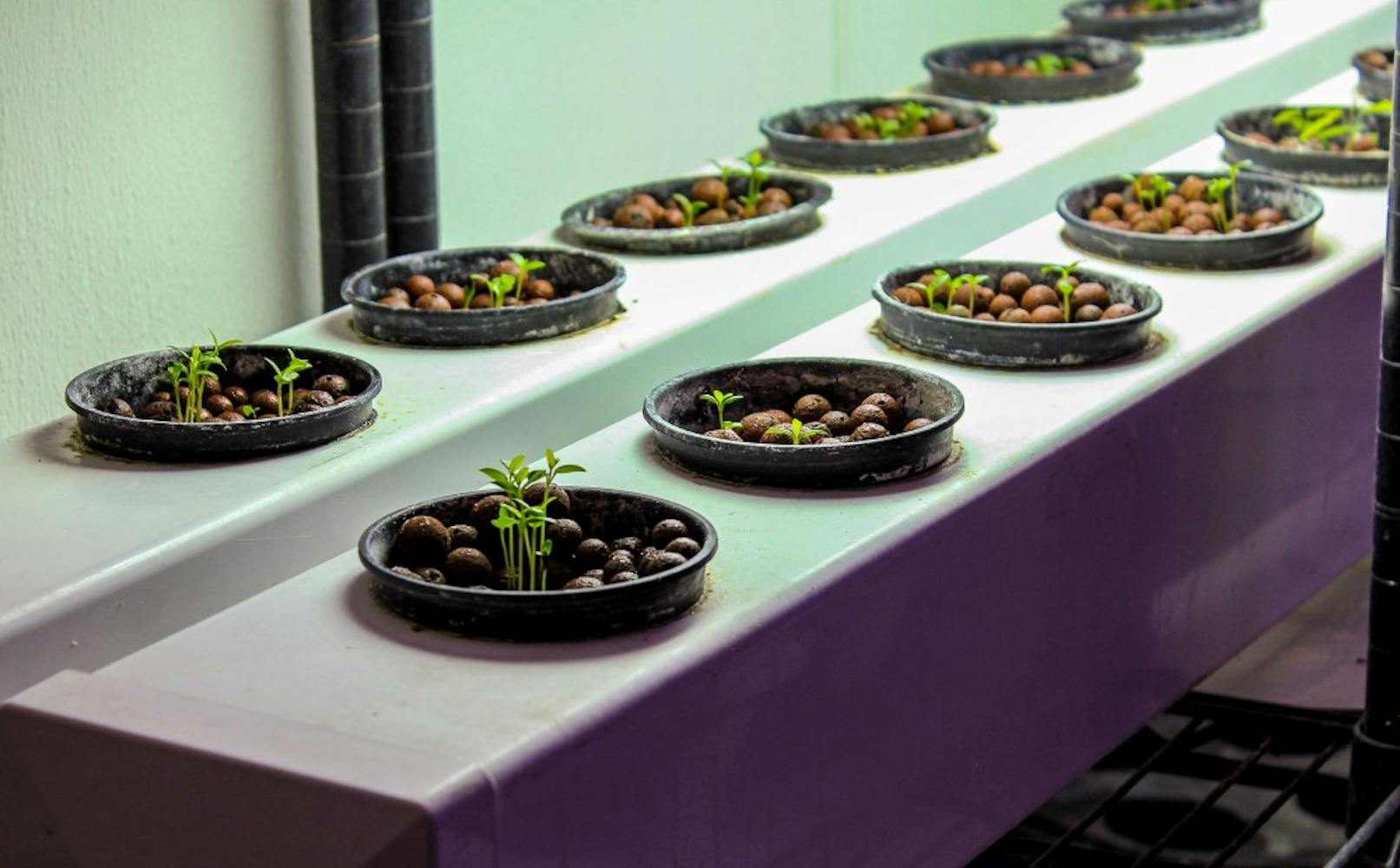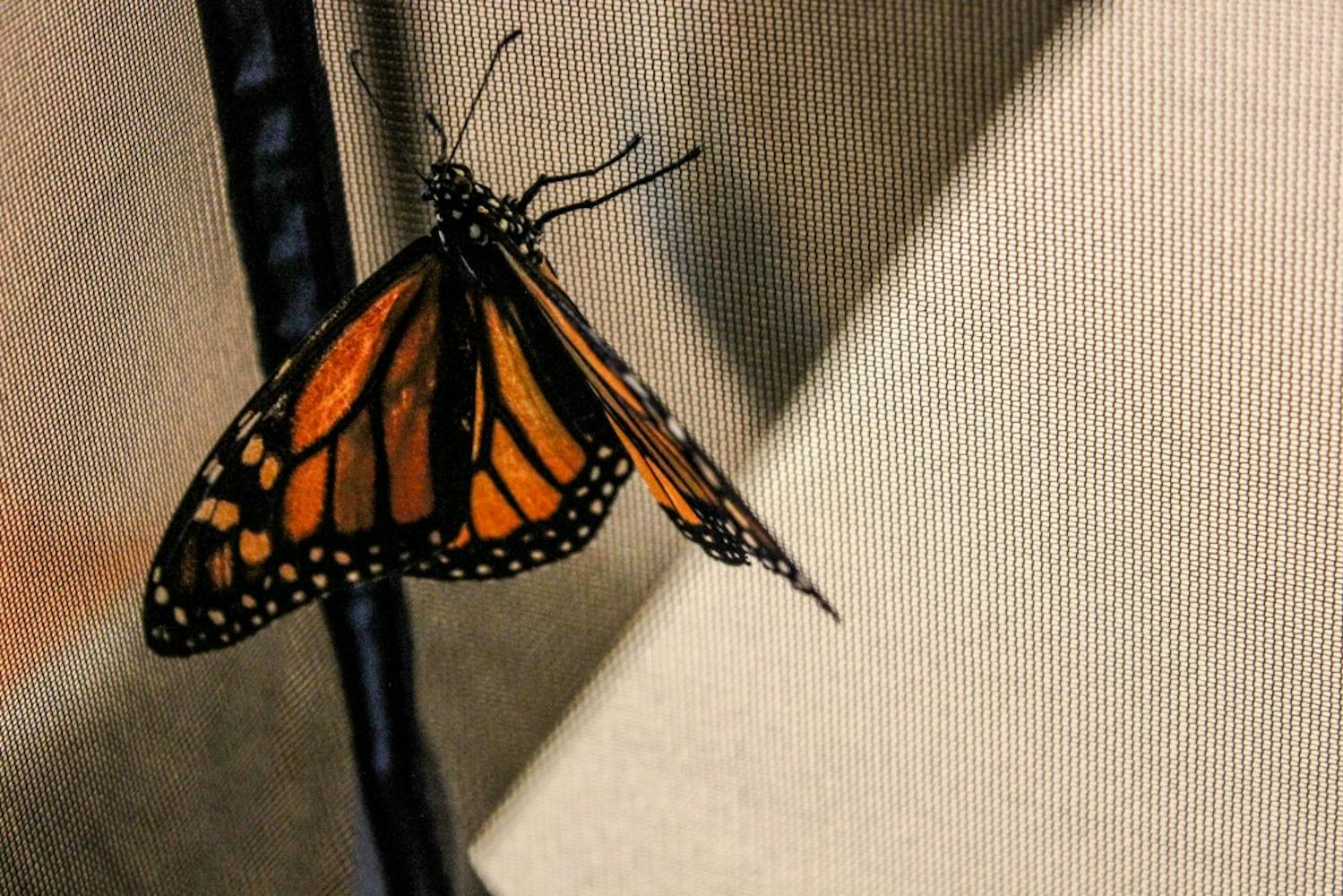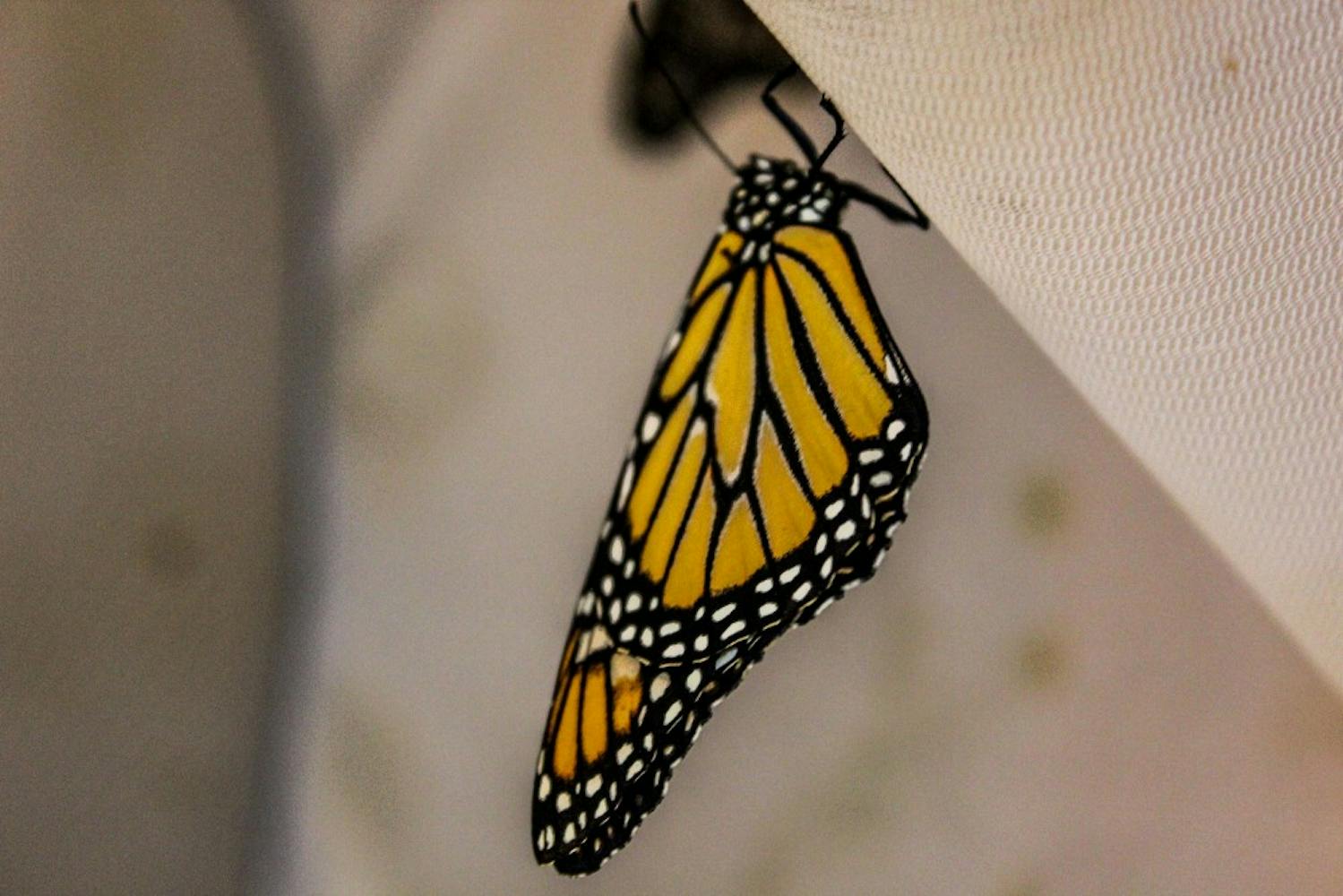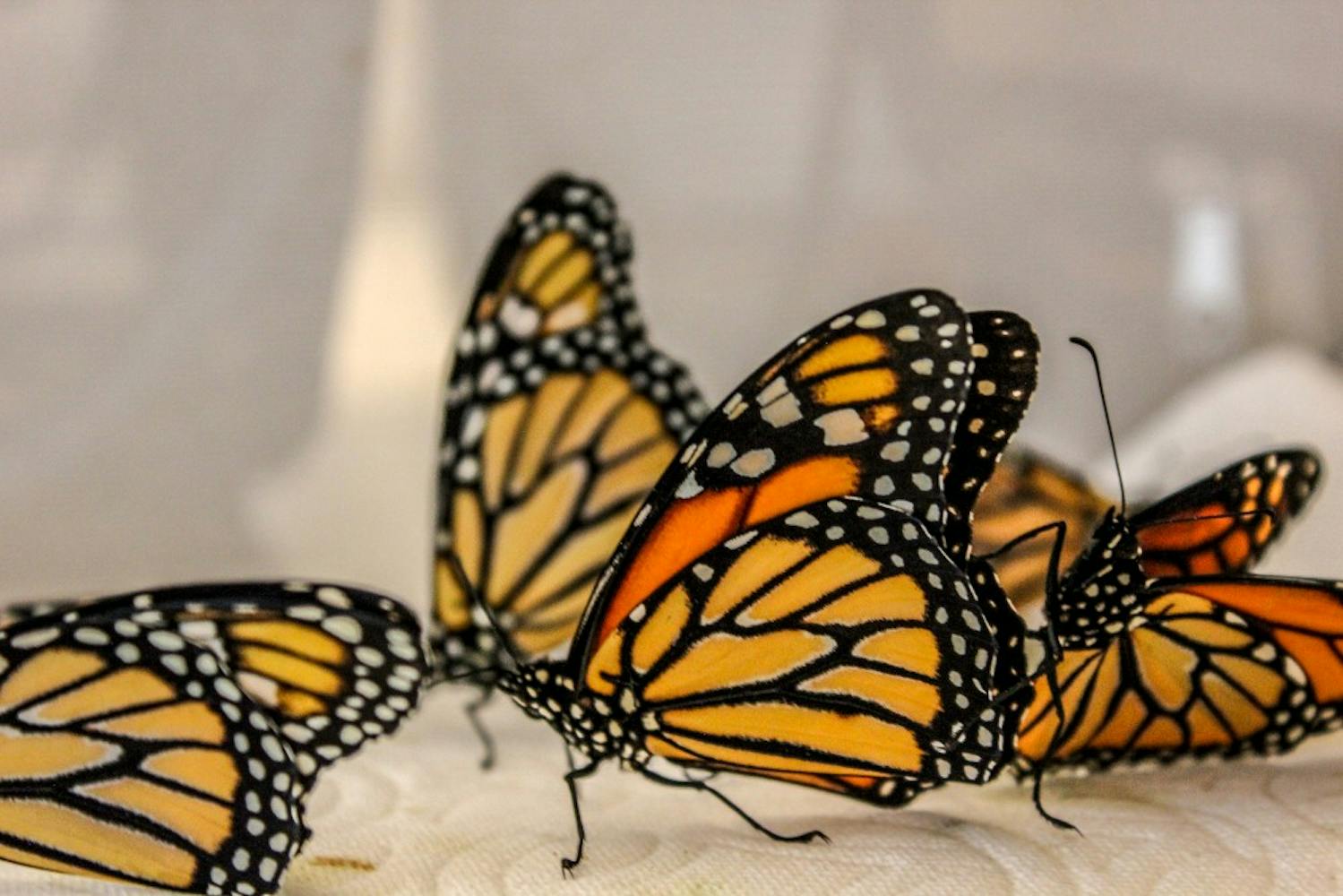Tatia Veltkamp, owner of Wings of Enchantment, has a home filled to the brim with butterflies — whether it’s decorations on the walls or breeding monarchs fluttering in their mesh enclosure.
Wings of Enchantment is a butterfly farm in northeast Albuquerque that ships butterflies to consumers across the country. What once started out as a hobby 18 years ago, has grown into a business of Veltkamp farming butterflies for the last nine years.
Her customers purchase the butterflies to release them at weddings and other events. After release, it is expected that the monarchs migrate with the Eastern population
“When my kids were little, I read an article in a magazine about how to go find caterpillars and eggs, but I didn’t know what milkweed was, so we had to figure out what milkweed was first in order to go find them,” Veltkamp said.
Veltkamp has her hands in the entire process, from growing sustainable milkweed for monarchs to feed off of, to processing and shipping the fluttering creatures. Veltkamp makes sure every butterfly in her care ethically farmed.
The production is made up of multiple rooms: two rooms for thriving milkweed, a room for caterpillars to go through their cycle and become butterflies, a room for female butterflies to lay eggs and a room that houses the boxes that the critters are shipped out in. The whole operation is run out of her home and backyard.
Veltkamp said she receives gravid females, butterflies ready to lay eggs, and starts her production from there. Veltkamp currently has three types of butterflies available for release, Painted Lady butterflies, Gulf Fritillary butterflies and Monarch butterflies.
Veltkamp said that after release, she believes her farmed monarchs become part of the wild Eastern monarch population. Monarchs migrate over 2,500 miles from Central Mexico in winter to the northern United States and parts of Canada in summer across generations — a unique feat in the insect world.
The migration patterns of monarch butterflies, as well as other migratory species is tracked annually through Journey North. Journey North is a citizen-science website that maps real-time sightings of certain animals, such as monarchs. Anyone with an account has the opportunity to share photos and report sighting of monarch butterflies, caterpillars and eggs. At the time this article was written, there was 676 reported sighting of Monarchs cataloged by Journey North so far in 2019.
Other citizen science websites that are used to help track monarch populations include iNaturalist and Monarch Watch. iNaturalist acts as a social media website where you can share nature observations through photos and discuss with other naturalists what you saw. The data is then collected and stored in data repositories.
Monarch Watch is a citizen-science website dedicated solely to providing the public with information about monarchs. It is a tagging program that was originally launched out of the University of Kansas to track the eastern monarch migration.
Steven Cary, author of Butterfly Landscapes of New Mexico, said documentation sites, like Journey North, are a great start for people who want to participate in butterfly conservation.
Get content from The Daily Lobo delivered to your inbox
“I would say there are monarch butterflies headed straight for New Mexico, some of them have been documented here already,” Cary said. “We want to get more people to start paying more attention to monarchs, we want them to join our volunteer observers.”
Cary said the monarch sightings in New Mexico are pretty limited.
“We don’t have many people out there looking which is part of the problem,” Cary said. “We might see anywhere from five to 15 reports (from) people in the spring.”
The impact of milkweed
Monarchs are picky eaters. They choose to lay their eggs on, eat the leaves from, and drink nectar solely from milkweed only. While there are several types of milkweed, the kind Monarchs tend to prefer is the common milkweed plant. The U.S. Department of Agriculture Forest Service describes common milkweed as “Nature's mega food-market for insects,” as over 450 insects feed on some part of the plant.
Monarch migration patterns mean they don’t have a specific territory.
“Monarchs move around a whole bunch, so it’s hard to pin down a specific habitat for them, Cary said. “Except they need milkweed, that’s a key plant for them.”
Part of the reason the population of Monarchs plummeted in the past decade is because the milkweed plant has disappeared. A 2017 research article by the U.S. Geological survey estimates that 1.8 millions stems of milkweed is needed to bring the monarch population back to a sustainable size.
“Let the gardens kind of go wild,” said Kevin Holladay, the Conservation Education program manager for the New Mexico Department of Game and Fish. “We don’t need to clear everything out, but for Monarchs specifically, growing and planting (milkweeds) can be very helpful.”
Cary said every spring the number of monarch butterflies going north approximates to a few thousand on average — instead of the million just 15 years ago.
Counts by the Xerces Society estimated 2019’s migration to be just under 30,000 butterflies — an 86% decline since 2017.
“They fly south in the fall, and then they want to come back in the spring because North America has so many milkweeds,” Cary said.
Holladay said that declining populations of butterflies, and bumble bees, can be connected to threats that affect the planet and its ecosystem.
“All of a sudden, butterflies are one of these classes of animals, a species of insect, that are seeing a really different environment then they evolved with,” Holladay said. “It’s not just monarchs, which are definitely under siege because of their specialization with milkweeds. They are a reflection of other threats to other critters we don’t often think about, like bumblebees.”
Shayla Cunico is the culture and music editor for the Daily Lobo. She can be contacted at culture@dailylobo.com or on Twitter @ShaylaCunico.
Makayla Grijalva is the multimedia editor for the Daily Lobo. She can be contacted by email at multimedia@dailylobo.com or on Twitter @MakaylaEliboria.












